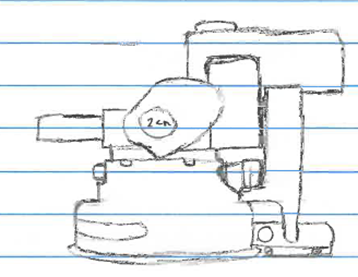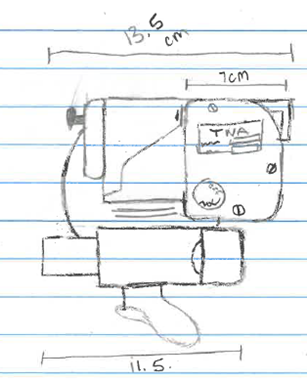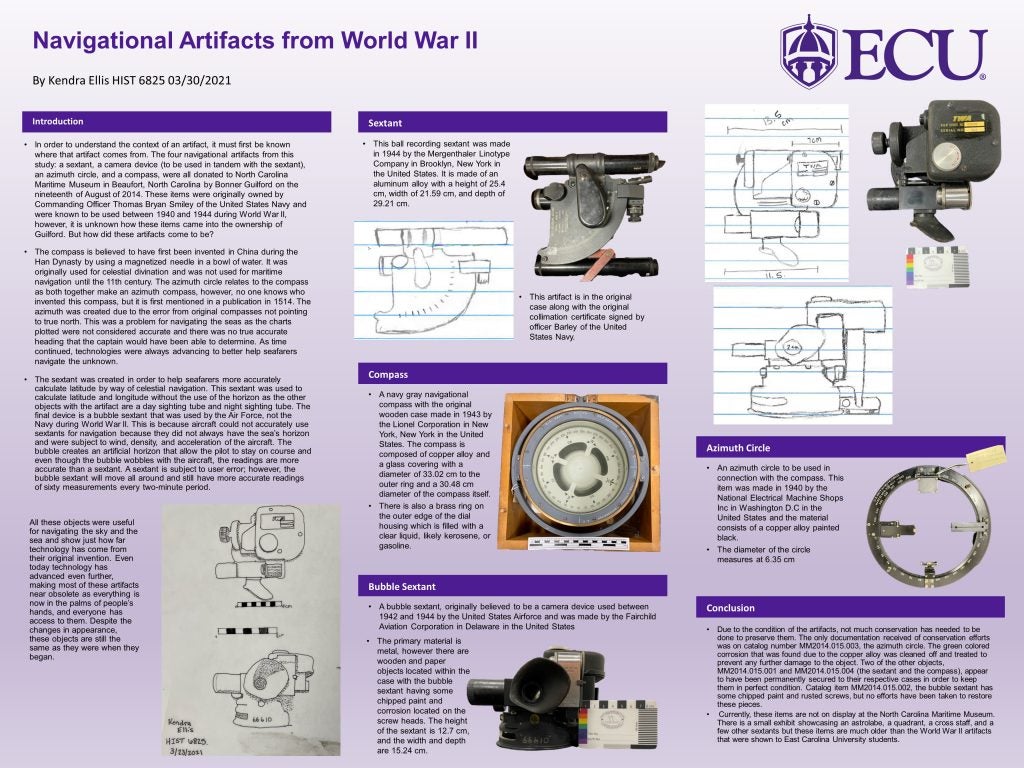
Historic Context
In order to understand the context of an artifact, it must first be known where that artifact comes from. The four navigational artifacts from this study: a sextant, a camera device (to be used in tandem with the sextant), an azimuth circle, and a compass, were all donated to North Carolina Maritime Museum in Beaufort, North Carolina by Bonner Guilford on the nineteenth of August of 2014. These items were originally owned by Commanding Officer Thomas Bryan Smiley of the United States Navy and were known to be used between 1940 and 1944 during World War II, however, it is unknown how these items came into the ownership of Guilford. But how did these artifacts come to be?
The compass is believed to have first been invented in China during the Han Dynasty by using a magnetized needle in a bowl of water. It was originally used for celestial divination and was not used for maritime navigation until the 11th century. The azimuth circle is connected with the compass as both together make an azimuth compass, however, no one knows who invented this compass, but it is first mentioned in a publication in 1514. The azimuth was created due to the error from original compasses not pointing to true north. This was a problem for navigating the seas as the charts plotted were not considered accurate and there was no true accurate heading that the captain would have been able to determine. As time continued on, technologies were always advancing to better help seafarers navigate the unknown.
The sextant was created in order to help seafarers more accurately calculate latitude by way of celestial navigation. This particular sextant was used to calculate latitude and longitude without the use of the horizon as the other objects with the artifact are a day sighting tube and night sighting tube. The final device is a bubble sextant that was used by the Air Force, not the
Navy during World War II. This is because aircraft could not accurately use sextants for navigation due to the fact that they did not always have the sea’s horizon and were subject to wind, density, and acceleration of the aircraft. The bubble creates an artificial horizon that allow the pilot to stay on course and even though the bubble wobbles with the aircraft, the readings are more accurate than a sextant. A sextant is subject to user error; however, the bubble sextant will move all around and still have more accurate readings of sixty measurements every two-minute period.
All of these objects were useful for navigating the sky and the sea and show just how far technology has come from their original invention. Even today technology has advanced even further, making most of these artifacts near obsolete as everything is now in the palms of people’s hands and everyone has access to them. Despite the changes in appearance, these objects are still the same as they were when they began.
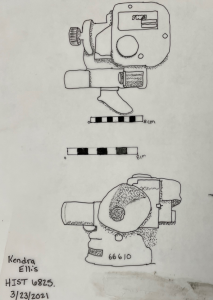
Description of Collection
Catalog number MM2014.015.001 is a ball recording sextant with five associated parts: a). the sextant, b). day sighting tube, c). night sighting tube, d). the wooden case, and e). the collimation certificate adhered to the inside of the case. This object was made in 1944 by the Mergenthaler Linotype Company in Brooklyn, New York in the United States. The sextant is made of an aluminum alloy with a height of 25.4 cm, width of 21.59 cm, and depth of 29.21 cm. This artifact is in the original case along with the original collimation certificate signed by officer Barley of the United States Navy. There doesn’t appear to be any damage found.
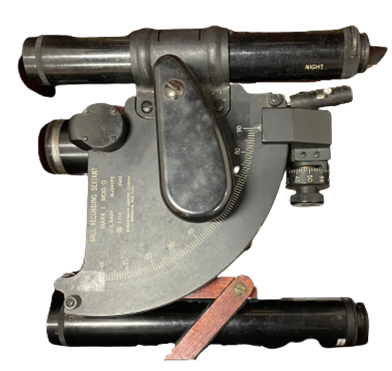
Catalog number MM2014.015.002 is a bubble sextant, originally believed to be a camera device for item MM2014.015.001. There are six associated parts along with the device: a). bubble sextant, b). case, c). bracket, d). packet of plastic disks, e). eyepiece, and f). battery tube. This artifact was used between 1942 and 1944 by the United States Airforce and was made by the Fairchild Aviation Corporation in Delaware in the United States. The primary material is metal, however there are wooden and paper objects located within the case with the bubble sextant having some chipped paint and corrosion located on the screw heads. The height of the sextant is 12.7 cm, and the width and depth are 15.24 cm. Any other examination was unable to be made due to the sextant being locked in the case.
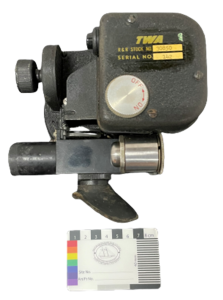
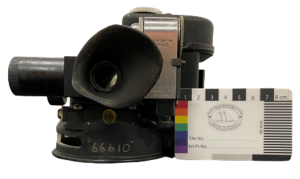
Catalog number MM2014.015.003 is an azimuth circle to be used in connection with item MM2014.015.004. This item was made in 1940 by the National Electrical Machine Shops Inc in Washington D.C in the United States and the material consists of a copper alloy painted black. The diameter of the circle measures at 6.35 cm and was gifted with wear and tear on the bottom as well as green corrosion from oxidation due to the copper alloy material.
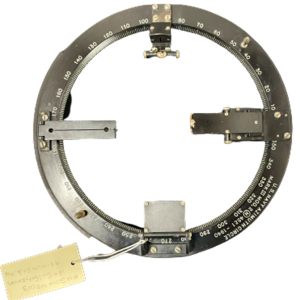
Catalog number MM2014.015.004 is a navy gray navigational compass with the original wooden case made in 1943 by the Lionel Corporation in New York, New York in the United States. The compass is composed of copper alloy and a glass covering with a diameter of 33.02 cm to the outer ring and a 30.48 cm diameter of the compass itself. There is also a brass ring on the outer edge of the dial housing which is filled with a clear liquid, likely kerosene, or gasoline. There does not appear to be any damage located on the compass although it was unable to be taken out of the case to be closely examined.

Ownerships, Curation and Conservation
As stated in before (see historical context section), these items originally belonged to Commander Thomas Bryan Smiley of the United States Navy when he served in World War II. Born on March 16, 1900, he joined the navy at seventeen years old where he originally became a radio operator during World War I, and he was promoted in 1940 to lieutenant commander when he was recalled to be a communications officer until he was promoted again in 1943. After the war’s end, Smiley taught electrical engineering at North Carolina State and was a part of the NC Power Squadron which helped the Coast Guard chart the changing waterways until he died in December of 1970 of respiratory arrest. How these items came to Bonner Guilford is unknown, however, an ancestry.com search for relatives shows that it is possible that they are distantly related.
Due to the condition of the artifacts, not much conservation has needed to be done to preserve them. The only documentation received of conservation efforts was on catalog number MM2014.015.003, the azimuth circle. The green colored corrosion that was found due to the copper alloy was cleaned off and treated to prevent any further damage to the object. Two of the other objects, MM2014.015.001 and MM2014.015.004 (the sextant and the compass), appear to have been permanently secured to their respective cases in order to keep them in perfect condition. Catalog item MM2014.015.002, the bubble sextant has some chipped paint and rusted screws, but no efforts have been taken to restore these pieces.
Currently, these items are not on display at the North Carolina Maritime Museum. There is a small exhibit showcasing an astrolabe, a quadrant, a cross staff, and a few other sextants but these items are much older than the World War II artifacts that were shown to East Carolina University students.
